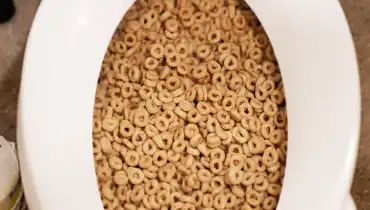Is it Rational to Dispose of Food in the Toilet?
Is it Rational to Dispose of Food in the Toilet?
Blog Article
Just about every person will have their own opinion about Is it safe to flush food (especially rice) down the toilet?.

Intro
Many individuals are often faced with the issue of what to do with food waste, specifically when it comes to leftovers or scraps. One usual question that develops is whether it's fine to purge food down the commode. In this post, we'll explore the reasons why individuals could consider flushing food, the repercussions of doing so, and alternative approaches for proper disposal.
Reasons why people may take into consideration flushing food
Lack of recognition
Some individuals may not be aware of the potential injury caused by purging food down the toilet. They may wrongly believe that it's a safe method.
Convenience
Flushing food down the bathroom may look like a quick and easy service to getting rid of unwanted scraps, especially when there's no nearby garbage can readily available.
Negligence
In some cases, people may merely choose to flush food out of large negligence, without thinking about the consequences of their actions.
Effects of flushing food down the bathroom
Ecological impact
Food waste that ends up in waterways can add to pollution and harm marine environments. Additionally, the water used to flush food can strain water resources.
Pipes problems
Flushing food can cause blocked pipelines and drains pipes, triggering expensive plumbing repair services and aggravations.
Sorts of food that should not be purged
Fibrous foods
Foods with coarse structures such as celery or corn husks can get entangled in pipelines and cause obstructions.
Starchy foods
Starchy foods like pasta and rice can absorb water and swell, causing clogs in pipes.
Oils and fats
Greasy foods like bacon or cooking oils need to never be purged down the commode as they can strengthen and cause clogs.
Appropriate disposal techniques for food waste
Making use of a garbage disposal
For homes equipped with garbage disposals, food scraps can be ground up and flushed with the plumbing system. However, not all foods appropriate for disposal in this manner.
Recycling
Specific food product packaging products can be reused, lowering waste and reducing environmental impact.
Composting
Composting is an environment-friendly method to get rid of food waste. Organic materials can be composted and used to enrich dirt for gardening.
The value of correct waste management
Reducing environmental injury
Proper waste administration practices, such as composting and recycling, assistance lessen pollution and protect natural deposits for future generations.
Shielding plumbing systems
By avoiding the practice of flushing food down the commode, homeowners can protect against costly plumbing fixings and keep the honesty of their plumbing systems.
Conclusion
Finally, while it may be alluring to purge food down the commode for benefit, it is very important to recognize the potential effects of this action. By embracing proper waste management methods and dealing with food waste sensibly, people can contribute to healthier plumbing systems and a cleaner setting for all.
FLUSH FOOD DOWN THE TOILET?
FLUSHING FOOD CAN CAUSE BLOCKED DRAINS IN YOUR HOME
All of the plumbing fixtures in your home are connected to the same sewer pipe outside of your home. This outdoor sewer pipe is responsible for transporting all the wastewater from your home to the Council sewer mains. Even small pieces of food that go down the kitchen sink can cause problems for your sewer. It should therefore be obvious that flushing larger bits of food, such as meat, risks a clog in either the toilet itself or the sewer pipes. Flushing greasy food is even more problematic because oil coagulates when it cools, coating the interior lining of your pipes.
THE TOILET IS NOT A BIN
Food isn’t the only thing that people shouldn’t be flushing down the toilet. People use the toilet to dispose of all kinds of things such as tampons, makeup wipes, dental floss, kitty litter and even underwear. Water goes to great lengths to educate residents about the high costs and stress placed on wastewater treatment systems simply from people flushing the wrong stuff down the toilet. It costs taxpayers millions of dollars each year, and homeowners thousands in blocked drain repairs.
FLUSHING FOOD IS A WASTE OF WATER
Flushing food is a waste of our most precious resource - water. In June this year Level 1 water restrictions were introduced to protect water supply from drought conditions. Much of New South Wales continues to be affected by prolonged drought with recent figures revealing up to 97 per cent of the state remains in drought. Depending on whether you have a single or dual flush toilet, every single flush uses between five and 11 litres of water. In the current climate this is a huge amount of water to be wasting on flushing food that should be placed in the bin (or better yet, the compost).
https://www.jabplumbingsolutions.com.au/blog/can-you-flush-food-down-the-toilet

We are very taken with and I hope you liked my blog entry. If you appreciated our blog entry kindly remember to share it. We truly appreciate your readership.
Visit Our Site Report this page